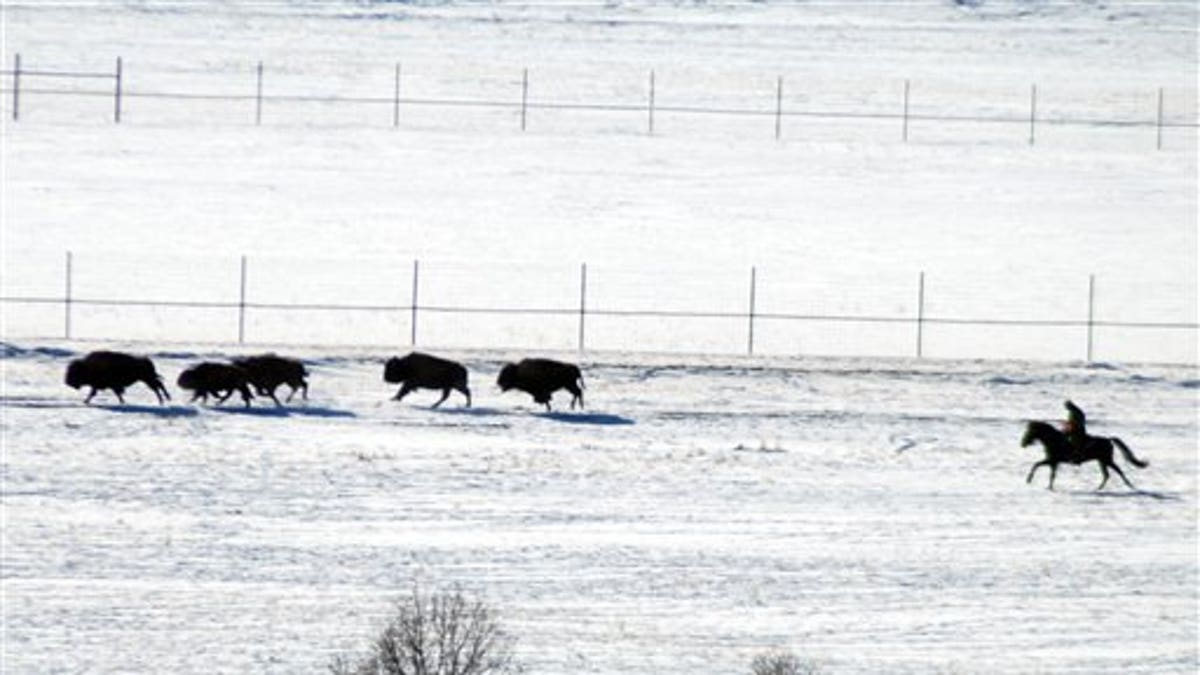
This image provided by the Buffalo Field Campaign shows livestock agents driving bison toward corrals inside Yellowstone National Park, Mont., for disease testing, Feb. 1, 2011. Animals that test positive for exposure to the disease Brucellosis were to be sent to slaughter in coming days. (AP)
BILLINGS, Mont. -- The Interior Department on Monday asked a federal judge not to intervene in the impending slaughter of potentially hundreds of wild bison that were captured in recent weeks after migrating out of Yellowstone National Park.
An estimated 382 bison are being held in corrals along the Yellowstone's northern border after leaving the snowed-in park to find food at lower elevations. Park officials have said those that test positive for exposure to the disease brucellosis will be shipped to slaughter -- and so could the remaining animals if the corrals get too full.
The park put those shipments temporarily on hold last week after opponents asked U.S. District Judge Charles Lovell to intervene. A coalition of environmental, American Indian and sporting groups argued that bison could be safely managed outside the park to minimize the chances of brucellosis infections in cattle.
But attorneys for the Interior Department said in a response filed with Lovell Monday that stopping the slaughter would allow bison to enter parts of Montana where they could spread brucellosis to livestock.
The attorneys also warned that if the migration of the "massive wild animals" is not put in check, they will enter agricultural and inhabited areas where they could jeopardize public safety, cause property damage, compete with livestock for grazing and destroy crops.
More than 1,000 bison could attempt to exit the park this winter, according to P.J. White, the park's wildlife chief, in an affidavit filed with the court. White estimated the bison population now stands at about 3,700 animals, down about 200 animals since late summer after 125 were killed by hunters outside the park and others died due to natural causes.
This year's slaughter plans are not unique: More than 1,400 bison were slaughtered and dozens more killed by hunters during the park's last major migration, in 2008.
In his affidavit, White acknowledged that "frequent, large-scale" slaughters could have "unintended consequences." But he added that maintaining an average population above 3,000 of the animals was sufficient for a robust population.
Brucellosis can infect cattle, bison elk and some other animals, causing pregnant females to prematurely abort their young. It was introduced to the Yellowstone region through the cattle of earlier European settlers, but has since been eradicated in livestock nationwide. No bison-to-cattle transmissions have been recorded.
Some landowners near the park have joined slaughter opponents to say bison should be allowed to roam more freely. The livestock industry insists that bison be kept largely inside the park as long as they carry brucellosis.





















